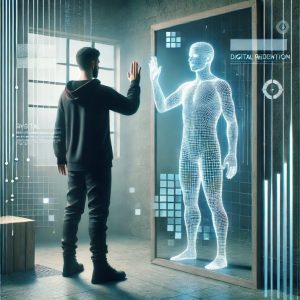Digital Replicas and the Law: Navigating AI-Generated Likenesses
In our last blog, we discussed how to identify and overcome AI Hallucinations when utilizing AI for business purposes. Today, we are exploring another important topic: digital replicas.
Digital replicas are AI-generated imitations of human voices, images, or appearances. They can be so realistic that they are often indistinguishable from the real thing. While these replicas open exciting possibilities for creativity and innovation, they also present complex legal challenges, especially regarding copyright and individual rights.
The US Copyright Office Initiative
In 2023, the U.S. Copyright Office (USCO) launched an initiative to study AI-related copyright and policy issues. Since then, the Office has received over 10,000 comments and is preparing a multi-part report.
On July 31, 2024, the USCO published Part 1 of the Report, which focuses on digital replicas and their legal implications.
Understanding Digital Replicas
Digital replicas mimic the voice, image, or appearance of real people. Examples include:
-
AI-generated voices in music tracks
-
Digital images used in films or advertisements
Advances in AI now allow these replicas to be created with minimal human intervention. This raises questions about authenticity, consent, and ownership. Unauthorized use of these replicas can create significant legal and ethical risks.
The Legal Landscape: Protections and Gaps
The USCO report highlights current legal protections and their limitations:
-
State Privacy and Publicity Laws: These offer some safeguards through rights of publicity and privacy. However, laws vary by state and often fail to fully address AI-generated replicas.
-
Federal Laws: Laws such as the Copyright Act, Federal Trade Commission Act, and Lanham Act provide partial protection. Yet, these statutes were not designed for AI and may not cover all nuances.
-
Need for New Legislation: The report strongly recommends new federal laws tailored to AI-generated digital replicas. These laws would protect individuals from unauthorized use of their likeness, voices, or images.
Impact on Creativity and the Arts
Digital replicas create both opportunities and challenges for the creative community.
-
Opportunities: AI tools allow artists to experiment, generate new content, and streamline workflows.
-
Risks: AI may displace human performers and traditional artistic labor.
For example, AI-generated songs featuring famous artists’ voices without consent have already caused controversies. Similarly, AI replicas in films could reduce work opportunities for actors.
At the same time, tools like text-to-video enable people with little artistic training to create complex content. In the future, AI could allow someone to generate a 2-hour custom movie starring themselves or others. Whether this fosters innovation or threatens traditional industries remains an open question—similar to debates when the internet became widely accessible.
Moving Forward: Balancing Innovation and Rights
As AI evolves, legal frameworks must adapt. The USCO report emphasizes balancing technological innovation with individual rights. Proposed approaches include:
-
Clear guidelines for the use of digital replicas
-
Protecting both celebrities and private individuals from unauthorized exploitation
-
Ensuring individuals can license or refuse use of their digital likeness
Conclusion
The intersection of copyright law and AI is rapidly evolving. The USCO report on digital replicas is a key step toward addressing legal challenges. However, lasting solutions will likely require action from Congress or the judiciary.
If left solely to courts, legal protections may be reactionary, only responding after harm occurs. Recent examples, such as the 2023 Writers Guild of America Strike, show the risks artists face when AI threatens employment.
Proactive legislation can help the U.S. lead in regulating AI and digital replicas. Clear guidelines would protect creative industries while allowing innovation to flourish.


